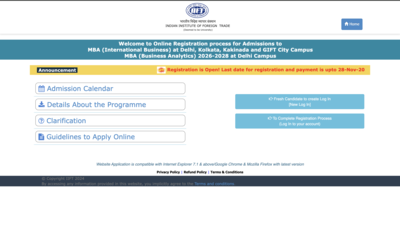Ethical, inclusive, effective: 7 smart ways teachers can use AI PCs and dashboards

There was a time when a teacher’s only “dashboard” was the mark book. Today, in many schools across the country, that dashboard glows on an AI PC — filled with graphs, alerts, and small data signals that map how each student learns. These systems don’t replace intuition; they strengthen it. Classrooms that once relied purely on instinct now run on insight, powered by data dashboards and AI-driven tools that help teachers see patterns invisible to the naked eye.The purpose isn’t automation; it’s augmentation. Dashboards reveal what has changed. AI PCs suggest how to respond. Teachers decide why and when. When used well, this partnership — evidence, suggestion, and judgement — creates classrooms that adapt faster, give feedback sooner, and make learning more inclusive.This transition is not about technology taking over teaching. It’s about teaching becoming more data-literate — guided by patterns instead of assumptions, reflection instead of repetition. Artificial intelligence and analytics are helping educators evolve from transmitters of content into coaches of cognition.Here are some of the most effective ways teachers can use AI PCs and data dashboards to guide learning, interpret data wisely, and stay human in an increasingly digital classroom.
Plan from evidence, not habit
Start your day with the data dashboard, not the textbook. Scan concept accuracy, time-on-task, and re-attempts. Two weak ideas will jump out, one over-practised topic will too. On your AI PC, pull a quick recap, a set of targeted questions, and one stretch task for early finishers. Build the period around those needs. End with a two-minute exit check and log results. Next class, start where the evidence points. You’ll cover less noise, more signal while students feel seen and you feel in control.
Group by learning behaviour, then rotate
Think about grouping students by how they learn, not by fixed labels. Start with the dashboard: check pace, hint use, common errors, and reading time. You’ll see patterns. Then set up three short-term groups—Rebuild, Practise & Explain, and Stretch. On your AI PC, spin up the right tasks for each: Worked examples and visuals for Rebuild; mixed practice with peer prompts for Practise & Explain; transfer problems for Stretch. Rotate the groups every two weeks so no one gets stuck with a tag. Keep the mastery goal the same for everyone, but let the route differ. It feels fair, it lowers anxiety, and the class keeps moving.
Run fast feedback loops, not heavy grading
Trade bulky unit tests for quick, frequent checks. After a mini-lesson, use your AI PC to generate two high-leverage questions. Push them. Open the dashboard’s item analysis to spot common slips versus true misconceptions. Write specific comments: “Rate vs ratio—check step two,” not “Revise.” Let the AI draft stems; you add the personal touch. Share one class pattern and one next step with each student. Action happens the same day. Errors don’t fossilise. Confidence grows because progress is visible.
Catch disengagement early and respond fast
Disengagement rarely shouts, it whispers. Watch the dashboard for missed logins, slower responses, or skipped practice. Don’t wait for a failing score. Your AI PC can surface the last three tasks and where the drop-off began. Use that as a bridge to a short, private chat. Ask what blocked progress. Offer a smaller entry task or a partner start. Set a 72-hour follow-up so the student knows you’re still there. Record only what you need. Data opens the door; care brings them back.
Build inclusion into the core lesson
Inclusion works best when it’s invisible and routine. Use AI PC accessibility tools for everyone: Live captions, read-aloud for dense text, translation for key instructions, and gentle text-simplify on first exposure. Pair this with the dashboard to spot who re-reads or stalls. Offer two input modes (typed or spoken) and two output modes (diagram or paragraph). Keep the concept target identical for all. No one is singled out. The room feels calmer. Learning becomes a shared climb, not separate routes.
Assess what matters, then show growth
Decide the skill first—recall, apply, or transfer. Have the AI PC draft isomorphic items so practice checks understanding, not memory of a pattern. Use the dashboard to plot trajectories over weeks. Sit with each student and show three things: the slope of their growth, one pattern they improved, one tiny habit to try next. Celebrate progress publicly; keep scores private. When students see movement, they push themselves. Assessment becomes a map, not a verdict. Parents understand the journey, not just the number.
Practise data hygiene and stay transparent
Trust keeps classrooms sane. Collect only the data you actually use for instruction. Avoid putting sensitive notes into digital fields. Set retention periods and purge old records. On the AI PC, switch off logging you don’t need. When you share dashboard views, anonymise where possible. Tell students and parents what you track, why it helps, and how long you keep it. Never rank publicly or use data to shame. Clean data habits aren’t bureaucracy. They are part of your pedagogy—and your promise.






